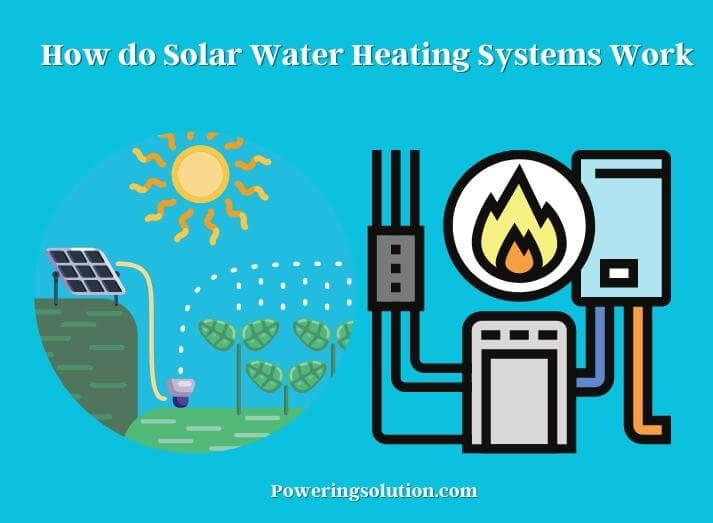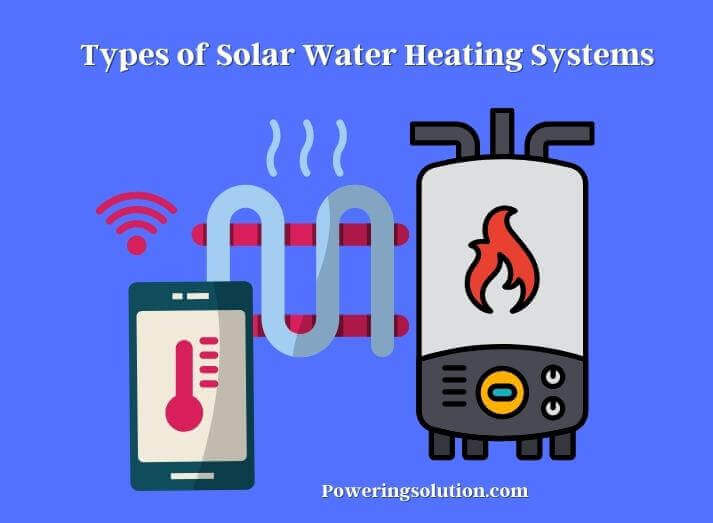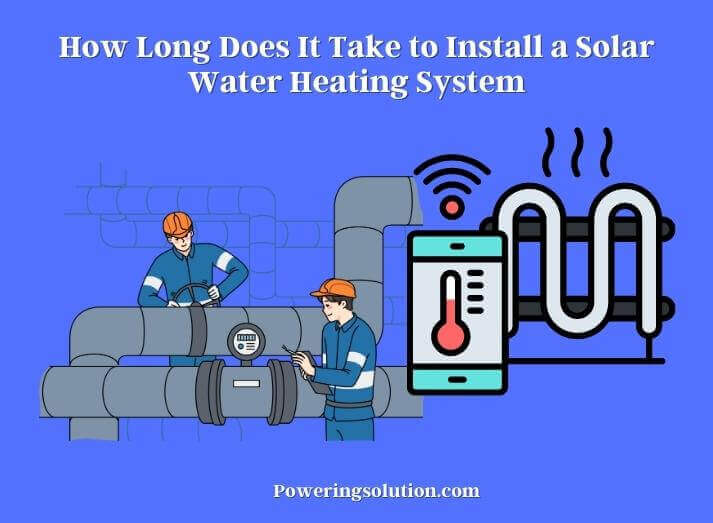Solar water heating systems are an innovative and sustainable way to heat water for your home. As we become increasingly aware of the impact of our energy consumption on the environment, many people are turning to eco-friendly solutions like solar energy to power their homes. Solar water heating systems have proven to be a reliable and cost-effective alternative to traditional heating systems, while also being more environmentally friendly.

By using the power of the sun to heat your water, you can reduce your carbon footprint and save money on your energy bills. Solar water heating systems require very little maintenance, making them a practical choice for homeowners.
We will explore the benefits of solar water heating systems, how they work, and what you need to consider before installing one in your home. Whether you’re looking to reduce your energy costs, lessen your impact on the environment, or simply explore sustainable solutions for your home, solar water heating systems may be the perfect option for you.
Benefits of Solar Water Heating Systems
Solar water heating systems offer numerous benefits for homeowners. In this section, we’ll explore some of the most significant advantages of using this sustainable energy source to heat your water.
Cost Savings
One of the most significant benefits of solar water heating systems is the cost savings they provide. While the initial installation cost may be higher than that of a traditional water heating system, over time, solar water heating systems can save you money on your energy bills. Since they rely on the sun’s energy to heat your water, there are no fuel costs associated with their operation. This means that you can enjoy hot water without worrying about rising energy costs.
Energy Efficiency
Another advantage of solar water heating systems is their energy efficiency. Unlike traditional water heating systems, which require constant energy to keep the water hot, solar water heating systems only require energy when the sun is shining. This means that they are much more efficient and use less energy overall, reducing your carbon footprint and environmental impact.
Environmental Impact
Solar water heating systems are an excellent way to reduce your environmental impact. By using the sun’s energy to heat your water, you are reducing your reliance on fossil fuels, which are responsible for much of the world’s greenhouse gas emissions. Using solar energy to power your home is a practical way to reduce your carbon footprint and help protect the environment.
Long Lifespan
Solar water heating systems are built to last. Most systems come with a warranty of up to 10 years, and with proper maintenance, they can last up to 30 years or more. This means that once you install a solar water heating system, you can enjoy hot water for many years without worrying about replacing the system.
Reliability
Solar water heating systems are incredibly reliable. Since they require very little maintenance, you can trust that they will continue to provide hot water for your home without any issues. They are also designed to work in a variety of weather conditions, so you can enjoy hot water even on cloudy days.
Solar water heating systems offer numerous benefits for homeowners, including cost savings, energy efficiency, environmental impact, long lifespan, and reliability. By using this sustainable energy source, you can enjoy the hot water while also reducing your carbon footprint and protecting the environment.
How do Solar Water Heating Systems Work?
Solar water heating systems work by harnessing the power of the sun to heat water. We’ll explore the components of a solar water heating system and how they work together to provide hot water for your home.

Solar Collector
The solar collector is the most visible part of a solar water heating system. It is typically installed on the roof of your home, where it can capture the sun’s energy. The solar collector is made up of a series of tubes or panels that contain a heat-absorbing material, such as copper or aluminum. When the sun shines on the solar collector, the heat-absorbing material heats up, transferring the heat to the water that flows through the tubes.
Heat Transfer System
The heat transfer system is responsible for transferring the heat from the solar collector to your water tank. It typically consists of a pump and a heat exchanger. When the water in the solar collector reaches a certain temperature, the pump circulates it through the heat exchanger, where it transfers its heat to the water in your tank.
Water Tank
The water tank is where the hot water is stored until you need it. It is typically insulated to help keep the water hot. In most solar water heating systems, a water tank is a separate unit from the solar collector and heat transfer system. This means that you can use your existing water tank if it is in good condition.
Backup Heating System
While solar water heating systems are designed to provide hot water even on cloudy days, they may not be able to meet all of your hot water needs. In this case, a backup heating system is used to supplement the solar water heating system. This can be a traditional water heating system or an electric heating element in your water tank.
Solar water heating systems work by using the sun’s energy to heat water, which is then transferred to a storage tank for later use. While they require an upfront investment, they offer numerous benefits, including cost savings and environmental impact.
Types of Solar Water Heating Systems
There are two main types of solar water heating systems: active systems and passive systems.

Active Systems
Active solar water heating systems use pumps to circulate water or heat-transfer fluid through the solar collector and heat exchanger. There are two types of active systems: direct circulation systems and indirect circulation systems.
i. Direct Circulation Systems
In a direct circulation system, the water that is used in your home is circulated through the solar collector and heat exchanger. These systems are typically more efficient than indirect circulation systems, but they may not be suitable for areas where temperatures drop below freezing.
ii. Indirect Circulation Systems
In an indirect circulation system, a heat-transfer fluid, such as antifreeze, is circulated through the solar collector and heat exchanger. The heat-transfer fluid then transfers its heat to the water in the storage tank. Indirect circulation systems are more suitable for areas where temperatures drop below freezing, as the heat-transfer fluid can be protected from freezing.
Passive Systems
Passive solar water heating systems do not use pumps to circulate water or heat-transfer fluid. Instead, they rely on natural convection to circulate water through the solar collector and heat exchanger. There are two types of passive systems: thermosiphon systems and integral collector-storage systems.
i. Thermosiphon Systems
In a thermosiphon system, the solar collector is mounted on the roof above the storage tank. As the water in the solar collector heats up, it rises into the storage tank, displacing cooler water. This causes a natural circulation of water through the system. Thermosiphon systems are simple and reliable but may not be suitable for homes with multiple stories or flat roofs.
ii. Integral Collector-Storage Systems
In an integral collector-storage system, the solar collector and storage tank are combined into a single unit. The water in the collector heats up and is stored in the same unit until it is needed. These systems are typically more efficient than thermosiphon systems, but they may not be suitable for areas with freezing temperatures.
Details About Installation Considerations
Installing a solar water heating system requires careful planning and installation. In this section, we’ll explore some of the key considerations that need to be taken into account during the installation process.
Roof Orientation and Tilt
The orientation and tilt of your roof can have a significant impact on the efficiency of your solar water heating system. Ideally, your roof should be oriented to the south and have a tilt angle that is equal to your latitude. Solar collectors can still be effective even if your roof is not perfectly oriented or tilted.
Available Space
The amount of available space on your roof will also impact the type and size of solar water heating system that you can install. Larger systems will require more space, and you’ll need to ensure that there is enough clearance around the solar collector to allow for maintenance and repair.
Climate
The climate in your area will also play a role in determining the type and size of solar water heating system that you can install. For example, if you live in an area with frequent cloudy days or harsh winters, you may need a larger system or a backup heating system to ensure that you have hot water year-round.
Building Codes and Permits
Installing a solar water heating system may require permits and inspections from your local building department. It’s important to work with a qualified solar installer who is familiar with local building codes and regulations to ensure that your system is installed safely and legally.
System Maintenance
Regular maintenance is essential to keep your solar water heating system running efficiently. This may include cleaning the solar collector, checking the heat-transfer fluid levels, and inspecting the storage tank and backup heating system.
What Kind of Maintenance Does a Solar Water Heating System Require?
Solar water heating systems require regular maintenance to ensure that they continue to function efficiently. Some of the key maintenance tasks include:
- Checking the heat-transfer fluid levels: The heat-transfer fluid should be checked annually and topped up as needed.
- Cleaning the solar collector: The solar collector should be cleaned annually to remove any debris or buildup that may reduce its efficiency.
- Inspecting the storage tank and backup heating system: The storage tank and backup heating system should be inspected annually to ensure that they are functioning properly.
- Checking the system for leaks: The entire system should be checked for leaks on a regular basis.
How Long Does It Take to Install a Solar Water Heating System?
The length of time it takes to install a solar water heating system can vary depending on several factors, including the type of system being installed, the complexity of the installation, and the availability of materials and equipment.

The installation process can take anywhere from a few days to a few weeks. During this time, the solar installer will typically perform a site assessment to determine the best location for the solar collectors, storage tank, and other components. They will also install the necessary plumbing, electrical connections, and control systems to ensure that the system functions properly.
While the installation process can be complex, a qualified solar installer can help guide you through each step and ensure that the system is installed safely and correctly. They can also provide guidance on maintenance and troubleshooting to help ensure that your system continues to function efficiently for many years to come.
Last Point
Solar water heating systems are a sustainable and cost-effective solution for homeowners who want to reduce their reliance on traditional energy sources. By harnessing the power of the sun to heat water, these systems can help reduce energy bills, decrease carbon emissions, and provide hot water even during power outages.
We explored the benefits of solar water heating systems, how they work, the different types available, and the installation considerations to keep in mind. We also discussed the importance of regular maintenance to keep your system running efficiently and provided some troubleshooting tips to help resolve any issues.
Investing in a solar water heating system is not only an investment in your home but also in the environment. It’s a sustainable solution that can help you save money on energy bills while reducing your carbon footprint. If you’re interested in learning more about solar water heating systems, it’s important to work with a qualified solar installer who can provide guidance and support throughout the installation process.
